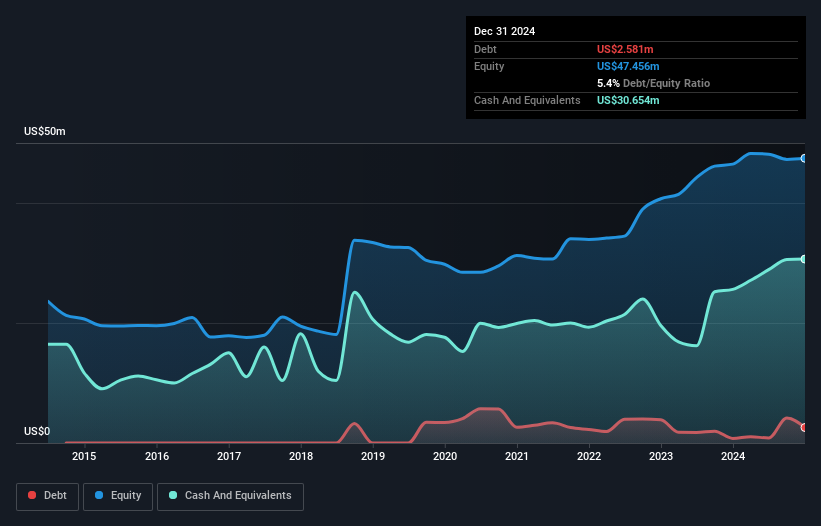Is CSP (NASDAQ:CSPI) Weighed On By Its Debt Load?
Legendary fund manager Li Lu (who Charlie Munger backed) once said, 'The biggest investment risk is not the volatility of prices, but whether you will suffer a permanent loss of capital.' It's only natural to consider a company's balance sheet when you examine how risky it is, since debt is often involved when a business collapses. As with many other companies CSP Inc. (NASDAQ:CSPI) makes use of debt. But should shareholders be worried about its use of debt?
We've discovered 1 warning sign about CSP. View them for free.When Is Debt Dangerous?
Debt and other liabilities become risky for a business when it cannot easily fulfill those obligations, either with free cash flow or by raising capital at an attractive price. Part and parcel of capitalism is the process of 'creative destruction' where failed businesses are mercilessly liquidated by their bankers. While that is not too common, we often do see indebted companies permanently diluting shareholders because lenders force them to raise capital at a distressed price. Of course, the upside of debt is that it often represents cheap capital, especially when it replaces dilution in a company with the ability to reinvest at high rates of return. The first thing to do when considering how much debt a business uses is to look at its cash and debt together.
What Is CSP's Debt?
The image below, which you can click on for greater detail, shows that at December 2024 CSP had debt of US$2.58m, up from US$760.0k in one year. However, it does have US$30.7m in cash offsetting this, leading to net cash of US$28.1m.

A Look At CSP's Liabilities
Zooming in on the latest balance sheet data, we can see that CSP had liabilities of US$16.6m due within 12 months and liabilities of US$3.51m due beyond that. On the other hand, it had cash of US$30.7m and US$18.1m worth of receivables due within a year. So it actually has US$28.7m more liquid assets than total liabilities.
This excess liquidity suggests that CSP is taking a careful approach to debt. Given it has easily adequate short term liquidity, we don't think it will have any issues with its lenders. Succinctly put, CSP boasts net cash, so it's fair to say it does not have a heavy debt load! When analysing debt levels, the balance sheet is the obvious place to start. But it is CSP's earnings that will influence how the balance sheet holds up in the future. So when considering debt, it's definitely worth looking at the earnings trend. Click here for an interactive snapshot.
Check out our latest analysis for CSP
Over 12 months, CSP made a loss at the EBIT level, and saw its revenue drop to US$56m, which is a fall of 10.0%. That's not what we would hope to see.
So How Risky Is CSP?
While CSP lost money on an earnings before interest and tax (EBIT) level, it actually booked a paper profit of US$185k. So taking that on face value, and considering the cash, we don't think its very risky in the near term. We'll feel more comfortable with the stock once EBIT is positive, given the lacklustre revenue growth. The balance sheet is clearly the area to focus on when you are analysing debt. However, not all investment risk resides within the balance sheet - far from it. We've identified 1 warning sign with CSP , and understanding them should be part of your investment process.
If you're interested in investing in businesses that can grow profits without the burden of debt, then check out this free list of growing businesses that have net cash on the balance sheet.
Have feedback on this article? Concerned about the content? Get in touch with us directly. Alternatively, email editorial-team (at) simplywallst.com.
This article by Simply Wall St is general in nature. We provide commentary based on historical data and analyst forecasts only using an unbiased methodology and our articles are not intended to be financial advice. It does not constitute a recommendation to buy or sell any stock, and does not take account of your objectives, or your financial situation. We aim to bring you long-term focused analysis driven by fundamental data. Note that our analysis may not factor in the latest price-sensitive company announcements or qualitative material. Simply Wall St has no position in any stocks mentioned.
 Wall Street Journal
Wall Street Journal